 Part 1 Recap: Hard Water
Part 1 Recap: Hard Water
In Part 1 of our series on water softeners, we discussed the effects of hard water on your pipes and appliances. We also noted how hard water reduces the effectiveness of soap and detergents and leaves chalky-white streaks and spots on dishes.
Of all the solutions we explored, water softeners provided the most efficient and cost-effective means of getting the unwanted minerals out of your hard water while still leaving it palatable.
Water Softener Components
Three basic components comprise a water softener system.
- Mineral Tank-This is where the action is. The mineral tank constitutes the heart of the water softening system. It contains the resin beads necessary in the ion exchange process that removes calcium and magnesium from your hard water.
- Brine Tank-The brine tank holds an aqueous solution usually containing a very high concentration of sodium. Sometimes the sodium is replaced with potassium, depending on the needs of the homeowner. The brine tank plays a key role in the regeneration cycle, which we’ll discuss in a later paragraph.
- Control Valve-This important component of the system determines when it is time to clean the resin beads that have been accumulating calcium and magnesium from the hard water flowing though the system. We’ll compare the different types of control valves and timers available in a later paragraph, also.
How Does It Work?
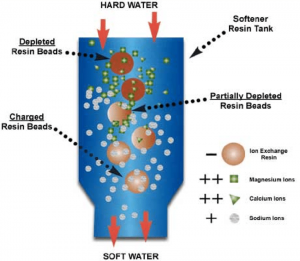
Ion exchange–trading scale-producing calcium and magnesium for non-scaling sodium or potassium.
- Polymer resin (like plastic beads) fill the mineral tank. These beads are covered with sodium or potassium ions.
- Hard water flows into the mineral tank.
- Because of their electrical charge, calcium and magnesium ions in the hard water attach to the negatively-charged resin beads.
- Sodium or potassium ions detach from resin beads and release into the water when calcium and magnesium attach.
- Softened water circulates back into the household supply.
What happens when the resin beads “fill up” with calcium and magnesium ions?
This is where the control valve and brine tank come into play. Calcium and magnesium eventually saturate the resin beads. This means that the beads can no longer attract these ions. They need to be cleaned. Water softeners clean the resin beads in a three-stage process called regeneration. Here’s how it works:
Step 1: Backwash
The control valve reverses the water flow. This removes all debris from the mineral tank and flushes it out the drain.
Step 2: Recharge
In step 2, brine (very salty water) from the brine tank pumps into the mineral tank and flushes the resin beads. The high concentration of salt in the brine forces the calcium and magnesium ions to detach from the resin beads. Calcium and magnesium ions move back into the water. The salt (either sodium or potassium ions) then attaches to the resin beads. Finally, the salty water, now filled with calcium and magnesium ions, flows into the drain.
Step 3: Rinse
Water softening resumes once recharging finishes. The mineral tank fills with hard water and ion exchange begins. When calcium and magnesium once more saturate the resin beads, the control valve initiates the regeneration process.
As you can tell, the control valve manages the entire process. In order to make the best choice, you need to know what’s available for you. Homeowners have a choice of types of valves to use.
Types of Control Valves
Automatic water softener control valves fall into three categories.
Some use an electric timer. The timer flushes and regenerates the water on a regular schedule regardless of the ion concentration. During the regeneration phase with this kind of timer, softened water is not available.
Another type of timer uses a computer. The computer monitors how much water passes through the mineral tank. When the pre-determined volume of water is reached, the computer starts the regeneration process. Systems with a computer timer generally reserve resin beads. This means that some soft water is available during the regeneration phase.
The third type of automatic timer uses a mechanical water meter. The water meter determines water usage. This means no water is wasted and the mineral tank recharges only when necessary. When you add second mineral tank to this system, you can have soft water even during recharging.
Take Your Pick
Water softeners come in all shapes and sizes, but each one provides you with a simple solution to your hard water problems. Not sure what’s best for you? Give us a call. We have the water treatment experts who can determine the perfect system for you.

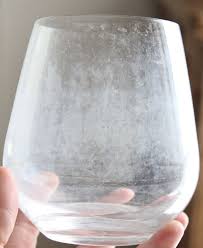 Part 1 Recap: Hard Water
Part 1 Recap: Hard Water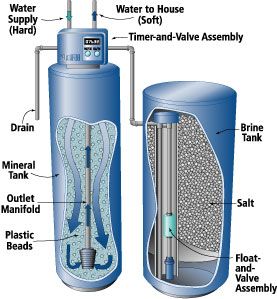
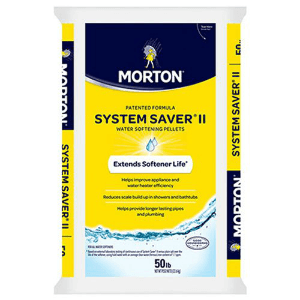
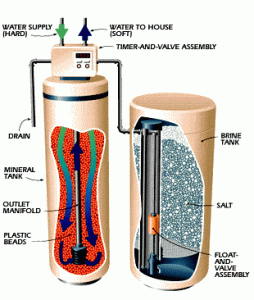
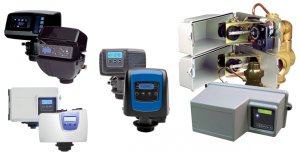
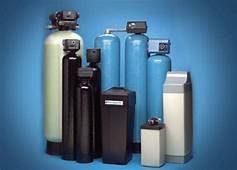
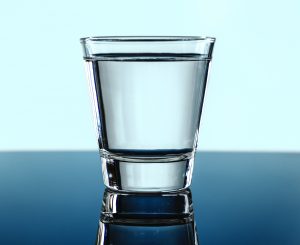 Water, anyone?
Water, anyone?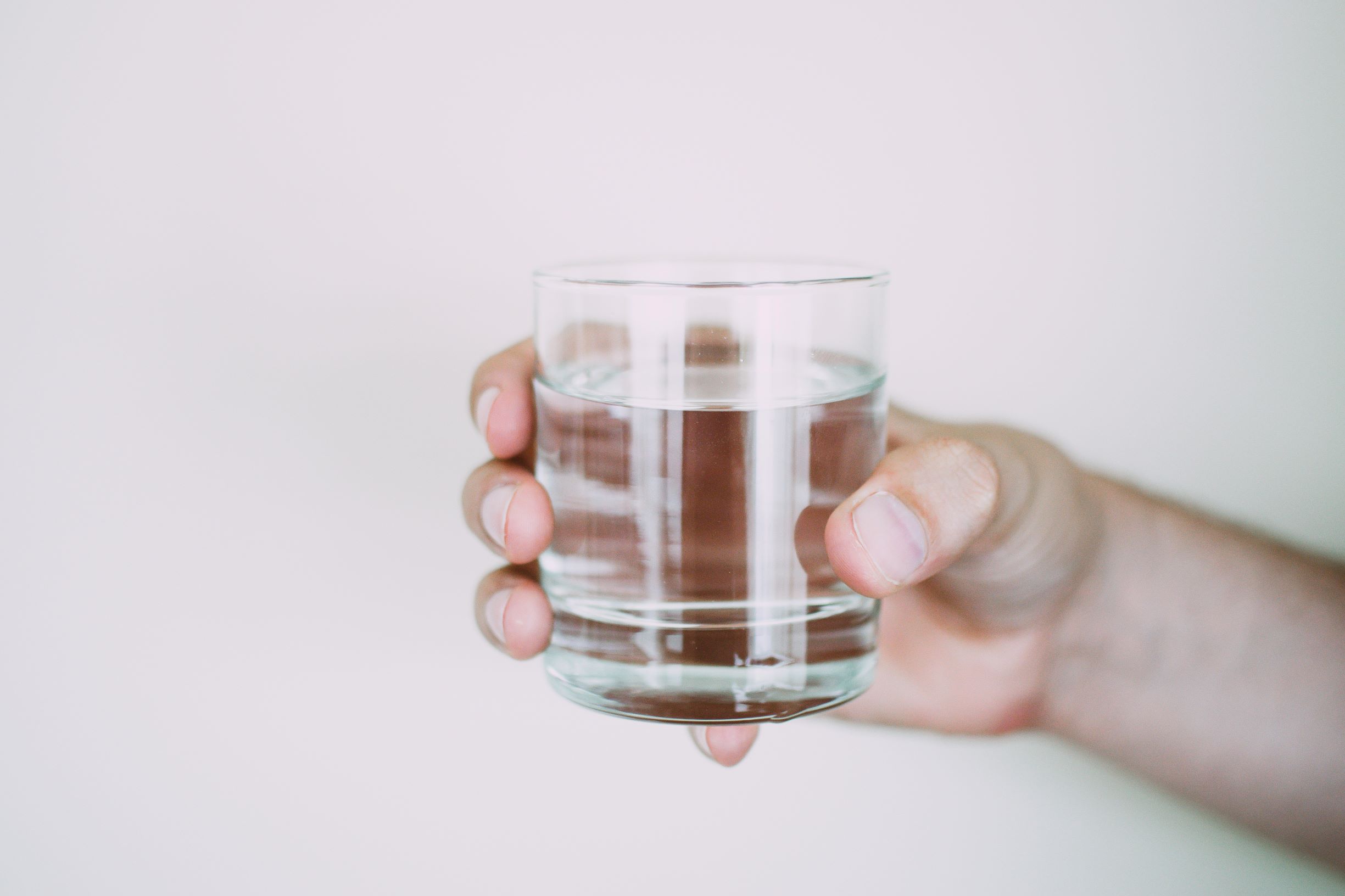 What is Reverse Osmosis?
What is Reverse Osmosis?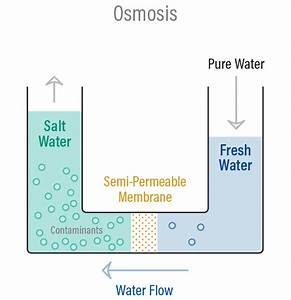 You have one cup of fresh water and one cup of water with salt mixed into it. You pour the salt water into the left side of this U-shaped glass beaker. Then you pour the fresh water into the right side. A very thin plastic membrane filled with thousands of very tiny holes sits in the center of the bottom tube of the beaker. When you pour the cups of water into each side of the beaker, the fresh water flows to the side of the salt water. The water level in that side of the beaker rises. This happens because there are more water molecules in the fresh water compared with the water molecules in the salt water. The fresh water moves toward the salt water to even up the number of water molecules.
You have one cup of fresh water and one cup of water with salt mixed into it. You pour the salt water into the left side of this U-shaped glass beaker. Then you pour the fresh water into the right side. A very thin plastic membrane filled with thousands of very tiny holes sits in the center of the bottom tube of the beaker. When you pour the cups of water into each side of the beaker, the fresh water flows to the side of the salt water. The water level in that side of the beaker rises. This happens because there are more water molecules in the fresh water compared with the water molecules in the salt water. The fresh water moves toward the salt water to even up the number of water molecules.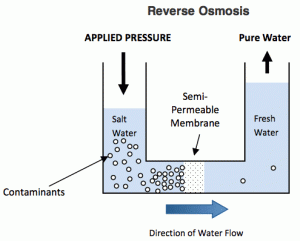 Reverse osmosis occurs when you apply pressure to salt water. The pressure forces the salt water up against the membrane. The salt particles are too large to fit through the membrane openings and only the small water particles are pushed through. The membrane effectively filters out the salt and contaminants, allowing the now-clean water to pass through and mix with the fresh water on the right-hand side.
Reverse osmosis occurs when you apply pressure to salt water. The pressure forces the salt water up against the membrane. The salt particles are too large to fit through the membrane openings and only the small water particles are pushed through. The membrane effectively filters out the salt and contaminants, allowing the now-clean water to pass through and mix with the fresh water on the right-hand side.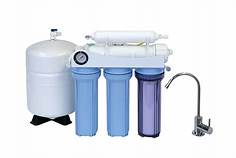 your home
your home